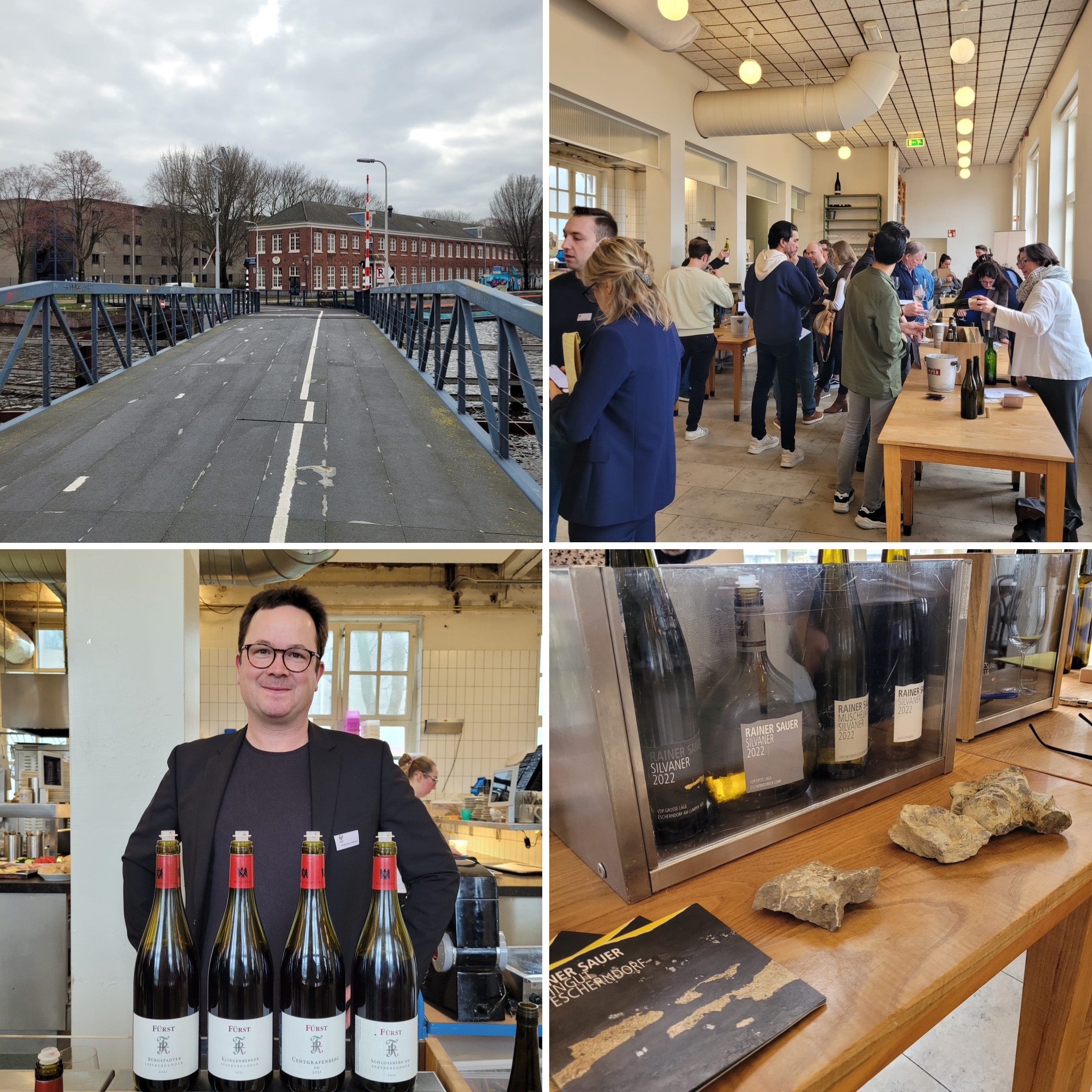German Wine Excellence: A Tasting Journey with Anfors Imperial and Wijnkameel.
This February, Anfors Imperial and Wijnkameel held a tasting focussed on Germany with some of the top VDP estates from Franken and Rheinhessen attending. We were honoured to be invited to this tasting, where we were able to taste some of the best Germany has to offer. From Burgundian, rich Spätburgunder (Pinot Noir) to mineral, nuanced Silvaner and electric Riesling, Germany has with this tasting once again shown that it excels at all sorts of wine styles, providing outstanding quality at all price points.
Anfors Imperial, a leading name in the Dutch wine scene
Anfors, founded in 2002 by Hans Bijvoets, initially focussed on Italian wines after Hans worked as a sommelier in Rome for two years. It was this experience that laid the foundation of the connection Anfors as of today has with Italian wine and its producers. Expansions followed later where more emphasis was laid on the Spanish and French wines of the world, broadening the spectrum of wines imported.
As of 2017, they merged with Imperial Wijnkoperij, giving shape to the Anfors Imperial of today, with a dedicated team of nine professionals maintaining a rich portfolio of over 750 wines. This merger gave them even more diversity in wine styles, adding many top German, Austrian and Hungarian producers to their portfolio. Through their long-term relationships with producers worldwide they are able to both offer some of the best wines of the world while also maintaining a wide selection of entry-level wines, solidly made and with great value for money. Their main focus is on European wines in the higher segment from classic regions such as Bordeaux, Burgundy, Rioja, Barolo, Tuscany, Rheinhessen, Rheingau and Wachau.
Notable imports include Parusso, Enzo Boglietti, La Rioja Alta, Parés Baltà, Bodegas Tradicíon, Jean Stodden, Christmann, Rudolf Fürst, Gunderloch, Rainer Sauer, Knoll, Kracher, and Weninger. For even more top-end producers, an overview can be found here. A few of the best Dutch restaurants have a broad range of Anfors Imperial’s imports on their wine lists, including De Librije***, Codium*, and Flore**.
Their significant contribution to the Dutch wine industry was recognised by leading wine magazine Perswijn, who awarded Anfors Imperial with the honorary title wine importer of the year in 2023. As strong as ever, in 2024 Anfors Imperial continues to be a leading importer for many of the higher-end restaurants and wine retailers while also offering their premium selection to consumers via their website.
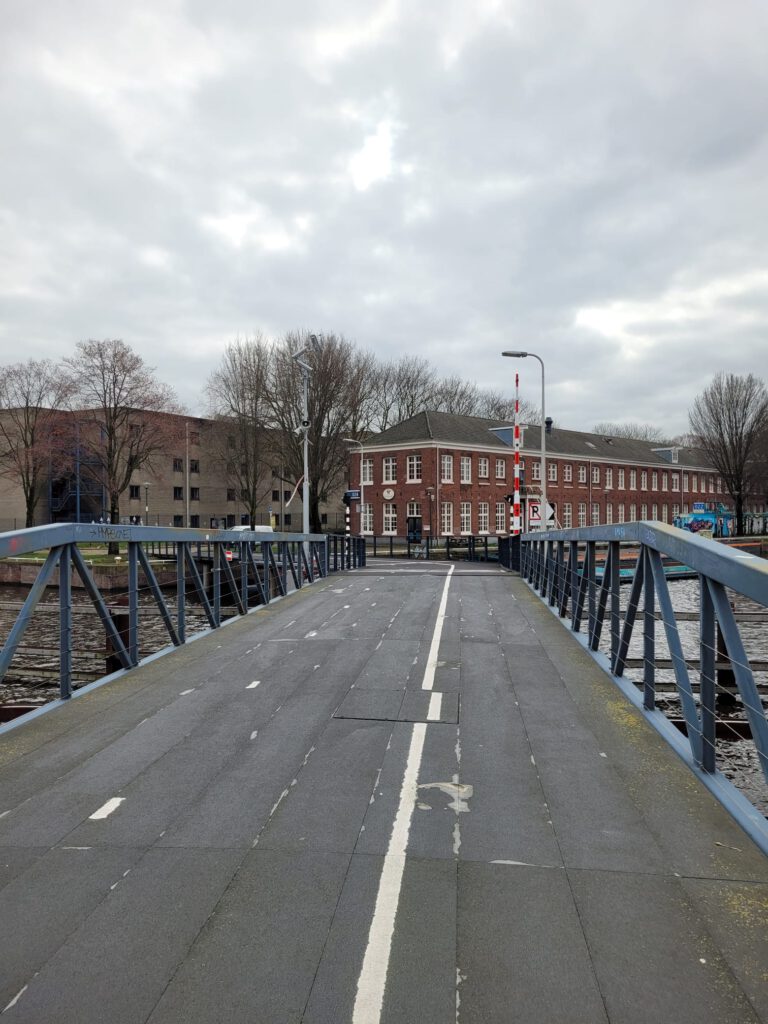
A Tour through Germany, a Selection of Four Estates.
For this tasting, we decided to focus on four producers, all with very diverse wines and philosophies. Rainer Sauer focusses on Franken’s signature variety Silvaner, brilliantly showcasing how it can brilliantly combine elegance and weight. Rudolf Fürst is situated in Franken too but instead focusses on Spätburgunder from red sandstone vineyards. Gunderloch is located in the famous Roter Hang sub region of Rheinhessen, where steep red slate vineyards produce mineral, exotic Rieslings, capable for aging for decades. Wagner-Stempel is located further inland in the Rheinhessen, and presents elegance and purity through a very wide range of bottlings.
All four wineries are members of the VDP, the elite group of German wine producers. The VDP has its own classification based on the Burgundian system of regional wine (Gutswein), village wine (Ortswein), premier cru (Erste Lagen), and on top of all, the grand cru sites (Grosse Lagen). For dry wines from the Grosse Lagen, the term Grosses Gewächs (GG) is used. For more information and background on the VDP and its classification, refer to this article written by our own Kazumi Uejo.
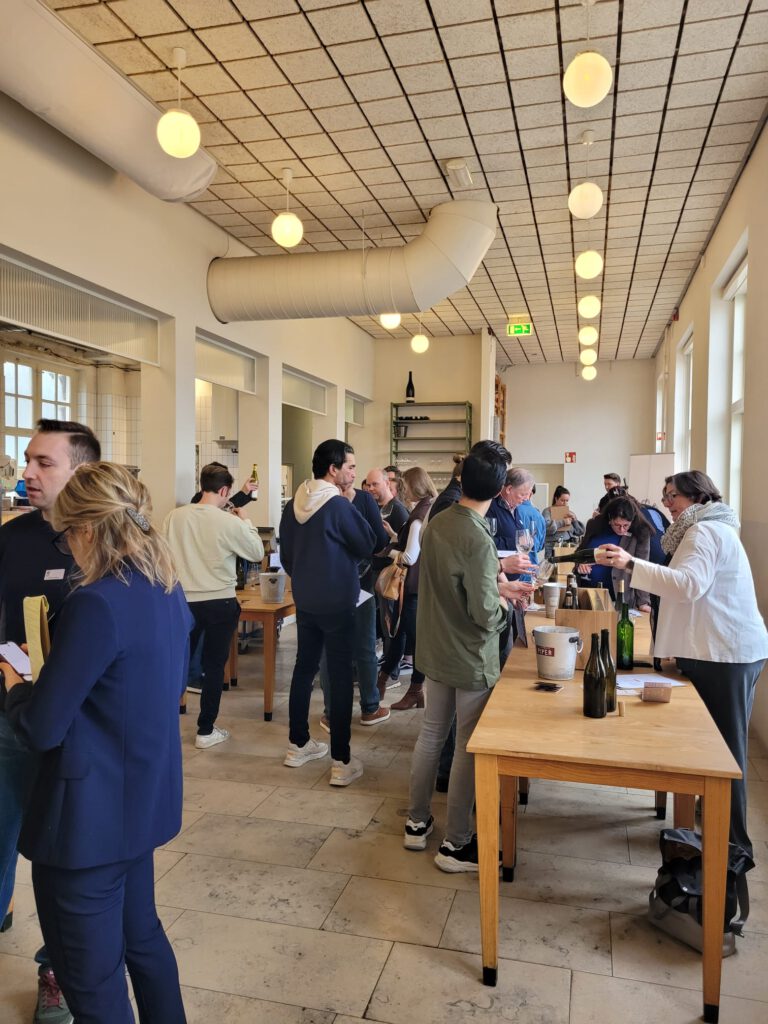
Weingut Rainer Sauer
Imported by Anfors Imperial. Weingut Rainer Sauer is also situated in Franken but focusses almost exclusively on Silvaner, helped by the limestone (Muschelkalk) soils found in the village of Eschendorf. In this part of Franken Silvaner is king, and Rainer Sauer produces some of the finest examples. When grown on the region’s dominant limestone soils, Silvaner produces restrained, mineral wines, characterised by lemon, earthy and herbal notes, with higher-end vineyards also bringing a fresh white peach note along with impressive concentration.
Rainer Sauer is a relatively young winery, being founded in 1979 by Rainer and his wife Helga. Their house style is one of very clean winemaking, allowing the subtlety of Silvaner to speak for itself. Old oak is only used for the Erste Lage wines and above, with the Gutswein and Ortswein being all about elegance and minerality. The Eschendorfer Am Lumpen 1655 Silvaner is their flagship wine, showcasing the paradoxical power and elegance the greatest Silvaner wines can simultaneously possess.
Besides Silvaner, which accounts for over 60% of plantings of the winery, Riesling is also grown in the Am Lumpen 1655 vineyard, giving the hallmark austere minerality that Riesling grown on limestone often brings to the table, with intense acidity and power. Experimentation with concrete eggs is going on as seen in the Silvaner Am Lumpen 1655 ‘AB OVO’ (Latin for ‘from the egg’) bottling, and sparkling Silvaner is made too. A winery to watch in the upcoming years as the winery transitions from Rainer to his son Daniel Sauer. Solid quality at all classification levels, all with a very friendly price.
Rainer Sauer Silvaner Trocken 2022
Entry-level Silvaner of Rainer Sauer. Vinified in stainless steel, preserving the delicacy of the variety. Light body, with good acidity. Lemon, lime, green apple, and herbs. Subtle and elegant, refreshing and drinkable.Good introduction to the variety, made into an easy-drinking balanced style. DWA 86, drink 2024-25.
Rainer Sauer Muschelkalk Silvaner Trocken 2022
Ortswein from Eschendorf made from young Lump (Erste Lage) and Am Lumpen 1655 (Grosse Lage) vines. Some clay and loess in the soil, giving more body and weight. Distinct mineral note comes through, helped by the usage of vineyards based on limestone soils. Lemon, ripe pear, green fruit, and smoke. Firmer acidity and more intensity. Impressive for the price. DWA 89, drink 2024-27.
Rainer Sauer Eschendorfer Lump Silvaner Trocken 2022
Erste Lage wine, made from older Lump vines grown on limestone from the village of Eschendorf. Full-bodied, helped by the aging in large old oak barrels. Very mineral and restrained, with distinctive power underneath. Aromatic. Flinty minerality, lemon, peach, lees notes, red apple, jasmin, and smoke. Quite long finish. Serious expression of Silvaner and the weightier style of wine it can produce, while still being elegant and refined. DWA 91, drink 2025-32.
Rainer Sauer Eschendorfer am Lumpen 1655 GG Silvaner Trocken 2022
Top wine of Rainer Sauer. Very mineral and smoky nose, still quite closed. Dense palate, helped by aging in old oak and long lees aging, showing salty minerality, grass, herbs, bread dough, lemon rind, ripe pear, peach, red apple, earthiness and white flowers. Very concentrated, with high acidity giving structure and balancing the full body and fruit intensity of the wine. Benchmark Silvaner from Franken, perfectly showcasing the potential of the variety to make dense, weighty, earthy wines that still possess so much freshness. Opens up with time in the glass, indicating a very long live ahead of it. Exceptional price-quality ratio. DWA 95, drink 2027-42.
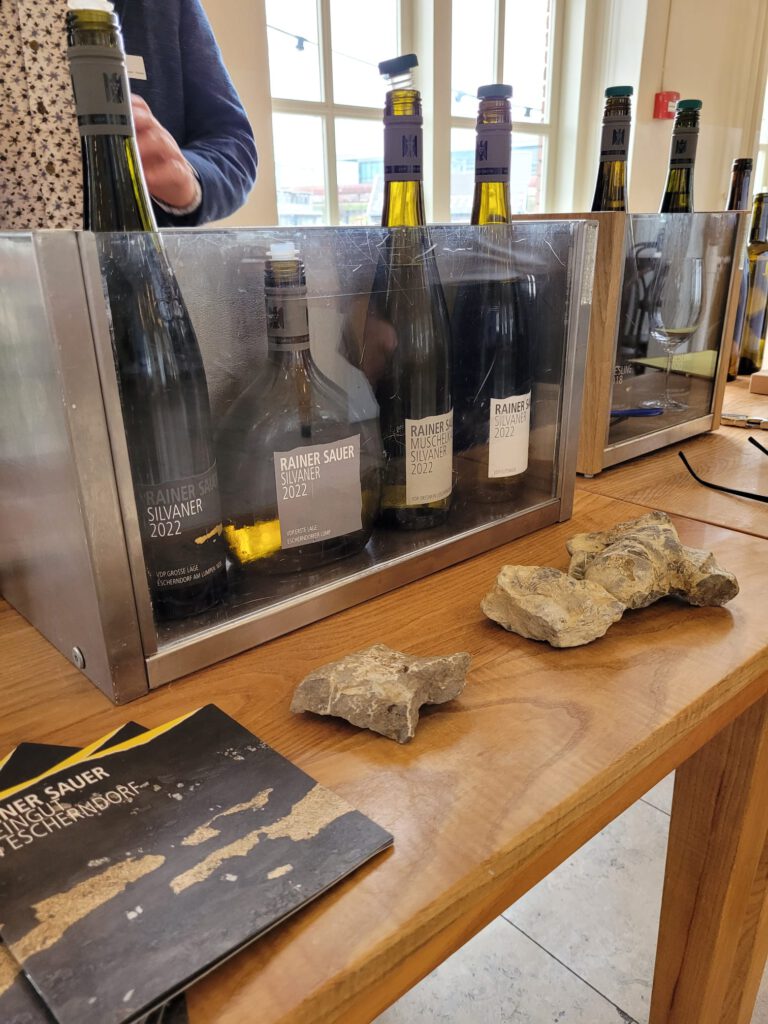
Weingut Rudolf Fürst
Imported by Anfors Imperial. Weingut Rudolf Fürst is situated in Bürgstadt where the red sandstone soils are ideal for Spätburgunder, which makes up 60% of their 21 hectares planted. The red sandstone retains heat from the day very well and thus continues the ripening process through the night, making for fully ripe grapes in what would otherwise be too cold of an area for red wine. Their prime parcels are the Centgrafenberg (both Spätburgunder and Riesling), Schlossberg (Spätburgunder), and Hundsrück (Spätburgunder) vineyards.
The Hundsrück vineyard with its shallow, gravelly red sandstone soil tends to produce the darkest, earthiest, and most structured wines, and is the flagship bottling. The Centgrafenberg is situated right next to the Hundsrück and has marginally deeper, loamier soils, giving a gentler expression of red and blue fruit, but still carrying the signature cool, ferrous minerality due to the red sandstone. The Schlossberg is situated in Klingenberg, a village west of Bürgstadt. This historic vineyard has unique red sandstone terraces which retain a lot of heat (harvest here is often 10 days earlier than in Bürgstadt), giving a very ripe, red-fruited style of wine with a lot of floral elegance and silkiness. For all three GG bottlings only the older vines on shallow, steep plots are used.
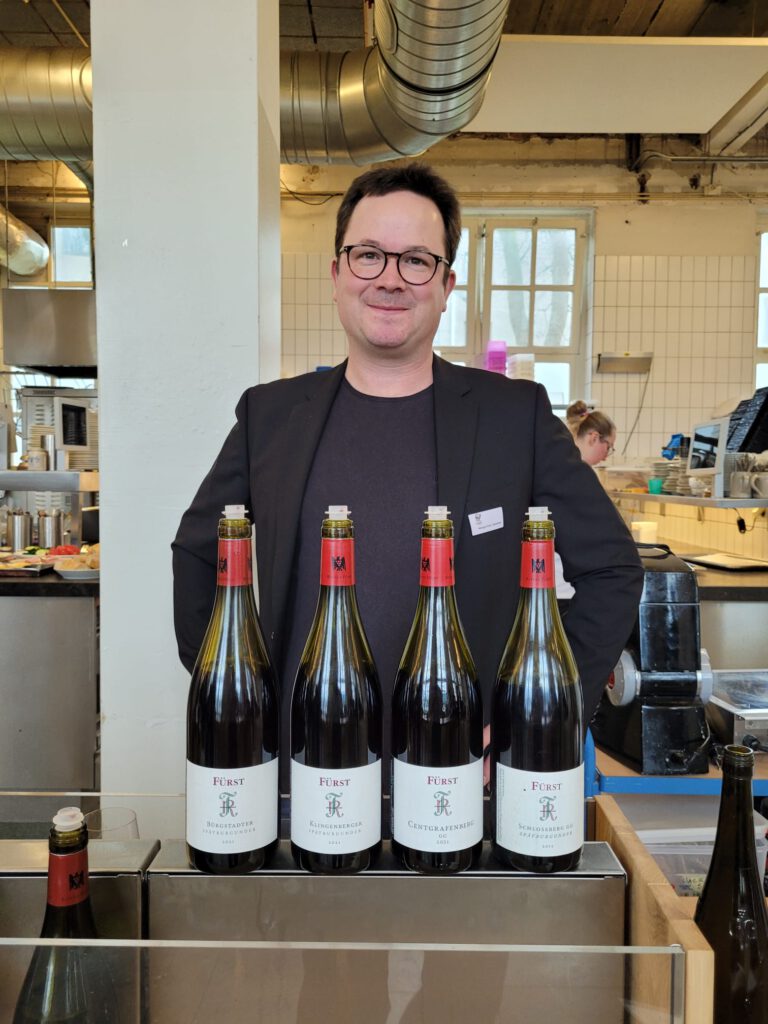
All in all, the red sandstone seems to give the wines a lot of aromatics and spice, along with ripe fruit and a certain cool ferrous minerality to them. This signature note carries all the way through to the entry-level wines, and is Rudolf Fürst’s signature for the red wines that are produced. Having studied in Burgundy at Domaine de l’Arlot, Sebastian Fürst (pictured above), son of Rudolf Fürst, brought the region’s winemaking techniques over to Germany, yielding incredibly polished, elegant long-lived red wines. Rudolf Fürst also produces world-class Riesling, which is made in a very pure, mineral style with crystalline acidity, a ripe yellow fruit profile, and very moderate alcohol – perfectly represented by his Centgrafenberg Riesling bottling. Together, Spätburgunder and Riesling only account for 10% of Franken’s wine production, but as the wines of Rudolf Fürst prove, yield some outstanding results in the region.
Rudolf Fürst Bürgstadter Spätburgunder 2021
Vines from around the village of Bürgstadt. The iron-rich red sandstone soils give a distinct cool, mineral note to the wine. More cool blue fruit, blueberry, red cherry, clove, and strawberry. Some game and smoke, but not rustic at all – rather polished. Very good structure and tannins, which are ripe and well-integrated. Has a certain authority to it. DWA 92+, drink 2024-31.
Rudolf Fürst Klingenberger Spätburgunder 2021
From young vines in the Schlossberg Grosse Lage. Detailed and elegant, very fine ripe red fruit profile, strawberry, ripe red cherry, rose petal, earthiness. Distinct whole bunch spiciness. Very layered and subtle, with medium plus detailed ripe tannins. Gets better with time in the glass. Very long finish. Nuance and complexity over power and density. If the Bürgstadt is like Pommard, then this is like Volnay. DWA 94, drink 2024-36.
Rudolf Fürst Centgrafenberg GG Spätburgunder 2021
Pronounced intensity, red and black fruit, violet, dark cherry, ripe strawberry. Spicy, Burgundian, with some new oak vanilla notes. Floral violet notes give elegance and lift. Very structured, great depth. Full bodied, with strong, fine-grained tannins and high acidity all keeping the intense fruit profile in check. Great winemaking combined with a great vineyard yield a benchmark German Spätburgunder. DWA 96, drink 2026-46.
Rudolf Fürst Centgrafenberg GG Riesling 2021
Intense and nuanced, with yellow fruit, nutmeg, herbs, old oak texture, peach, orange, yellow pear, smoke, bread dough and passion fruit. Quite powerful but also precise, like balancing a sword. High acidity, but of a pure, tartaric kind, instead of harsher malic acidity, giving good structure and longevity to the wine. Old-school Riesling from one of the best Riesling producers in Franken. Lightning in a bottle. Still a bit closed, will improve further over the years. DWA 95+, drink 2026-51.
Weingut Gunderloch
Imported by Anfors Imperial. While in the larger Wonnegau sub-region of Rheinhessen the likes of Klaus Peter Keller and Wittmann continue to produce some of Germany’s most concentrated, austere electric dry Rieslings from limestone soils, in the smaller, more northerly sub-region of the Roter Hang, Gunderloch is to be found. Here, Riesling produces wines with concentration, roundness, intensity and exuberant, spicy fruit.
Like with Rudolf Fürst, the soils here are red, but in a completely different way. This part of Germany used to sit around the equator over 290 million years ago, when the soil was a desert of red sandy clay. Over time the sandy clay was buried deep down and compressed, thus forming the famous red slate of the Roter Hang. Notable Grosse Lage vineyards situated on this soil include Hipping, Brudersberg, Pettenthal, and Rothenberg, all situated just on a four-kilometre-long southerly facing slope. Weingut Gunderloch, led as of 2015 by Johannes Hasselbach, has many holdings in these great vineyards, resulting in almost all wines produced having the signature spicy minerality that the Roter Hang is known for.
The Rothenberg is their prime vineyard, and tends to yield extremely mineral, spicy Rieslings with citrus and stone fruit. The soil here is a more clayey red slate, resulting in wines that are a tad austere and held-back in their youth but age very gracefully, never losing their signature mineral expression. Their main focus is on Riesling (85% of plantings), which is often vinified using skin contact and old oak barrels to gain extra aromatic complexity, depth and texture. Apart from running the winery, Johannes Hasselbach is also the president of the local Rheinhessen VDP charter, with both him and his wines being excellent ambassadors of the region and its wines.
Gunderloch Riesling vom Roter Schiefer 2021
Entry-level Riesling made to show the effect of the red clayey slate of the Roter Hang on the wines produced. Expressive nose, with red apple, yellow fruit, apricot, and peach fruit. Some residual sugar is noticeable, giving the wine a fruity lift. Light-bodied and fresh, very enjoyable. DWA 87, drink 2024-26.
Gunderloch Riesling ‘Als wär’s ein stück von Mir’ 2022
Made from young Rothenberg vines combined with older vines in the famous Hipping Grosse Lage. The younger Rothenberg vines give the wine a fruit-forward, ripe style, whereas the older Hipping vines give the wine an element of depth and concentration. Intense nose of honey, red apple, lemon, Jasmin, yellow pear, white peach, cinnamon and minerality. Long, complex and elegant finish. ‘Als wär’s ein stück von Mir’ translates into ‘as if it was a piece of me’, expressing how fond Johannes is of this bottling. We tend to agree with him. Very attractively priced for the quality. DWA 91, drink 2024-32.
Gunderloch Nackenheimer Rothenberg Riesling 2022
Rothenberg is Gunderloch’s most prized possession, highlighted by their motto ‘Wir leben Rothenberg’, and due to this wine, we can see why. Intense smoky, mineral nose with herbal nuances such as liquorice. Ripe apricot, Jasmin, apple blossom, yellow apple and pear, all with intense concentration. Firm acid structure. Almost like tasting a rock. Extremely long and complex finish. Has the potential to age for a very long time. DWA 95+, drink 2028-52.
Weingut Wagner-Stempel
The last and fourth winery is imported by Wijnkameel, who partnered up with Anfors Imperial for this German themed winery.
Located in the remote village of Siefersheim, Weingut Wagner-Stempel is to be found, along with its two prized Grosse Lage vineyards Heerkretz and Höllberg. The vineyards consist of mostly shallow, rocky volcanic porphyr and rhyolite, both of which are granitic, red soils intermingled with quartz. These soils warm up quickly and hold on to their heat, with the quartz particles also reflecting sunlight to the vines – similar to the Llicorella soils of Priorat. This allows the grapes to become fully ripe, which in combination with the lower yields due to the shallow, stony soils on steep slopes, gives wines of outstanding quality. The Höllberg occupies a more sheltered position at slightly lower altitudes compared to the Heerkretz vineyard, giving a riper, rounder, more powerful style of wine.
Weingut Wagner-Stempel, led as of 1993 by eight generation Daniel Wagner, has one of the most diverse assortments of grape varieties planted, with besides Riesling (50% of plantings), Scheurebe, Silvaner, Weissburgunder, Grauburgunder, Sauvignon Blanc, Chardonnay, Spätburgunder, St. Laurent, and even Merlot also being planted. Sparkling wine is made too, using Riesling, Chardonnay and Weissburgunder. Experiments such as using new oak for the Sauvignon Blanc Reserve are also commonplace at the winery – resulting in a grand total of over 25 bottlings, something very few German wineries have ever achieved. However, despite the many wines made, the house style of a certain freshness and clarity in the fruit always carries through, even in the heavier wines. All in all, lots of exciting things going on in this remote place in Rheinhessen!
Wagner-Stempel Riesling 2022
Entry-level Riesling, showcasing the house style. Sourced from various vineyards around Siefersheim. Fresh red apple, Jasmin, peach, and green fruit. Good acidity. Pure and fresh, with some residual sugar. DWA 86, drink 2024-25.
Wagner-Stempel Siefersheim Riesling ‘Porphyr’ 2022
From stony, shallow vineyards with porphyr volcanic rock in the soil. More intense aromatics and flavours. Restrained style, quite floral, with a mix of green, citrus and stone fruit. Distinct herbal, minty note. Some lees influence is noticeable. Stronger acidity than the entry level wine, but balanced by the fruit intensity and fuller body of the wine. DWA 88, drink 2024-27.
Wagner-Stempel Höllberg Riesling GG 2022
From the Höllberg Grosse Lage situated above the village of Siefersheim. The wine opens up with honeydew melon, apricot, peach, ripe lemon, smoke, and yellow pear. Very round, with a full body and good weight due to the lees aging. Riper, fuller profile. Long, complex finish. Will age nicely. DWA 92, drink 2026-32.
Reflecting on a Day of German Wine Mastery: Insights and Appreciations
To conclude, we look back on a great day of tasting and getting to know the unique producers Anfors Imperial and Wijnkameel brought to the table. Many of the wines tasted showed great typicity and were benchmarks for their region, while also being ambassadors of the current very high quality of German wines in general. We will be on the lookout for more of their imports in the future.
We encourage you to stay tuned as we will feature some of the producers in this article in a more in-dept winery profile later this year.
This article was written by our own Martin Bronkhorst. We would like to thank the teams of Anfors Imperial and Wijnkameel for the invitation and their hospitality, and of course all wineries for their time and the great wines they brought with them.

